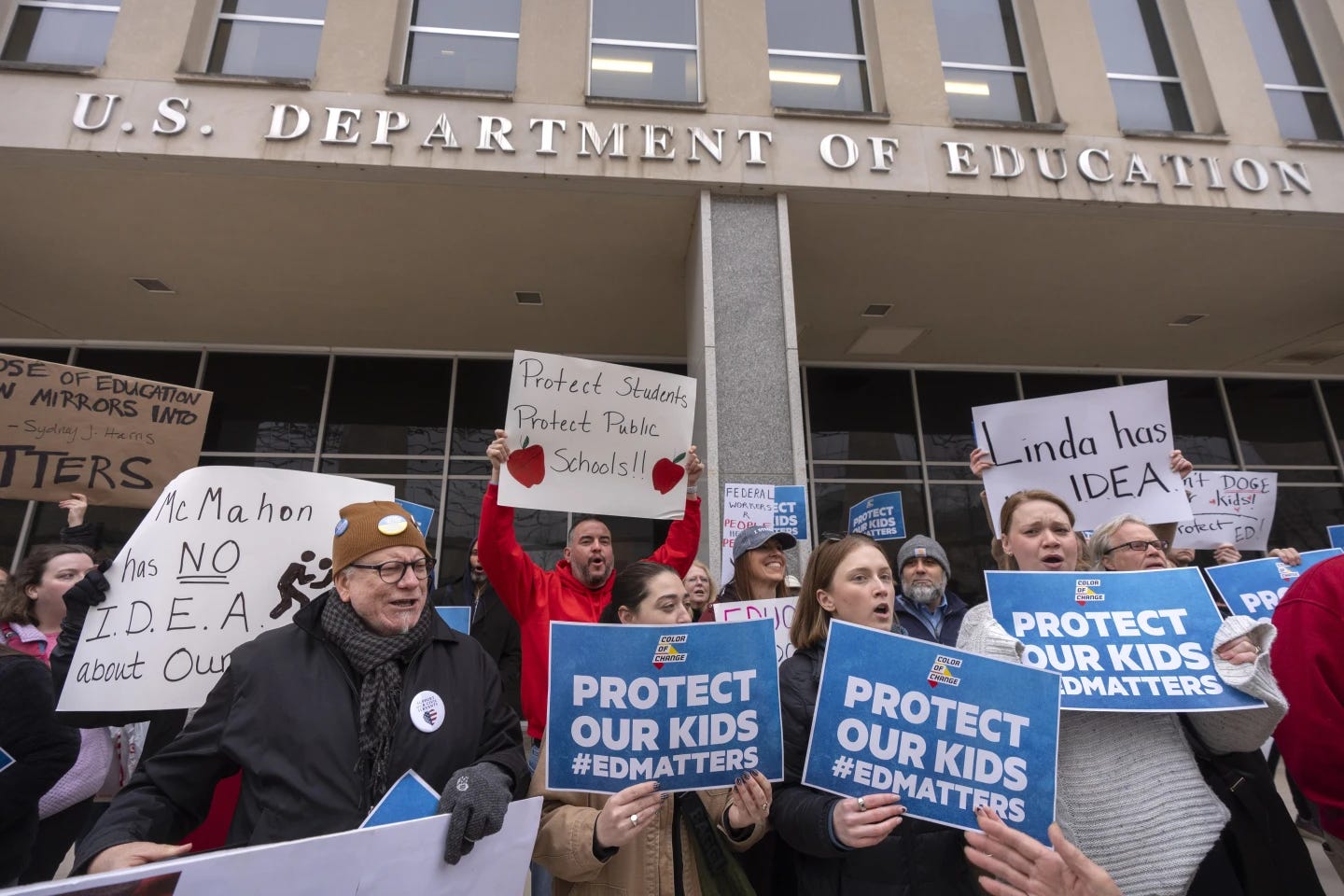The U.S. Department of Education is facing an unprecedented shake-up under the Trump administration—massive workforce reductions, deep funding cuts, and the looming possibility of its complete elimination. While supporters claim this will curb government interference, the reality for Black, Brown, and low-income communities is far more alarming. This shift threatens to unravel decades of progress in education equity, dismantling vital programs that provide resources, protections, and opportunities for historically marginalized students. Without federal oversight, who will ensure that every child—regardless of race or income—has access to quality education?
The Shrinking of Federal Protections
For decades, the Department of Education has played a critical role in ensuring educational access for marginalized communities. Programs like Title I funding for low-income schools, Pell Grants for college students, and special education resources have been instrumental in closing opportunity gaps. With the Department now facing a reduction in workforce and funding, the burden shifts to state governments—many of which lack the infrastructure or political will to provide equitable educational support.
Black and Brown students, who disproportionately rely on federal assistance for access to quality education, could see significant disruptions. States with a history of underfunding schools in marginalized communities may now have even less accountability to provide equal resources. Without federal oversight, policies like school desegregation efforts, affirmative action, and protections against discrimination could weaken.
The Impact on Student Loan Borrowers
Low-income students, particularly those of color, are more likely to take on student debt to finance higher education. The Department of Education currently manages over $1.7 trillion in student loans. With its potential dissolution, there are concerns about whether alternative management systems will prioritize borrower protections. Additionally, the rise of private school vouchers and charter school expansion has led to a redirection of public funds, exacerbating disparities between private and public institutions.
Public schools, which serve the majority of Black, Brown, and low-income students, are already underfunded. The potential erosion of federal oversight could accelerate this trend, pushing more resources toward private and religious schools that often lack accountability in meeting the needs of marginalized students. Without strong oversight, predatory lending practices could surge, disproportionately harming first-generation college students and those from economically disadvantaged backgrounds while further entrenching an unequal education system where access to quality schooling is increasingly tied to socioeconomic status.
Cuts to Diversity and Equity Programs
Recent moves to eliminate over $600 million in grants for programs centered around Diversity, Equity, and Inclusion (DEI) have sparked alarm. These programs provided critical support for students from marginalized backgrounds, offering mentorship opportunities, scholarship assistance, and culturally relevant curriculum development aimed at closing long-standing educational gaps. By gutting DEI-focused initiatives, the administration is not just cutting funding but dismantling essential pathways for underrepresented students to access higher education and career advancement. The rollback of these programs could significantly widen racial disparities in academic achievement and professional representation, reinforcing systemic inequities that DEI efforts were designed to combat.
A Future of Inequality?
Education has long been touted as the great equalizer, yet the current policy trajectory suggests a deepening of racial and economic divides. If the federal government relinquishes its role in funding and regulating public education, disparities in school resources, teacher quality, and college affordability will likely widen.
As Black, Brown, and low-income families navigate these uncertain changes, advocacy at the state and local levels becomes even more crucial. Community organizations, grassroots efforts, and legal challenges may play a key role in ensuring that the most vulnerable students do not bear the brunt of these sweeping policy changes.
The question remains: without a strong Department of Education, who will hold the system accountable for the success of all students—not just those with the means to access privilege?













Share this post